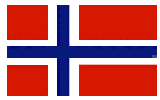May 17, 2005
Syttende Mai: Entrepreneur of the Year 2005 + 100th Anniversary of Norwegian Independence

Iím honored on this 100th anniversary of Norwegian independence from the oppressive Swedes (just kidding, I might be five-eights Norwegian, but Iím also a quarter Swede and an eighth Dane) to have spent the evening accepting the ďEntrepreneur of the YearĒ Award from the 2005 Entrepreneur Program Class at the University of Wisconsin Ė Eau Claire, College of Business. Iíve been a guest speaker since back in the day and they keep inviting me back, so naturally Iím very appreciative this year to be blessed with such an honor. Check out their Web site Ė itís got the full story on what is one of the most fun volunteering activities Iíve been involved with these past few years.
Sadly, the UWECEP saying goodbye to Jim Pathos, their ďEntrepreneur-in-ResidenceĒ for the past few years, without whom, the program could never have achieved so much.
Thanks!
Iím so honored in fact, I canít resist spending just a few lines on the subject of Norwegian independence day (my grandmother would very proud of me) Ė if you read the story below, youíll see why, only Norwegians can figure out how to celebrate May 17th 1814, with independence in the year 1905 and then make May 17th 2005 the 100th anniversary!?!?! (Donít worry, I donít get it eitherÖ itís a Norwegian thing.)
 Regardless, for a great explanation of why this is so significant, hereís the backstory:
Regardless, for a great explanation of why this is so significant, hereís the backstory:
-
Syttende Mai has a similar significance in Norway as July 4th has in the United States of America. It marks the country's declaration of independence and the triumph of constitutional government. This day is also called Constitution Day and National Day and is a great spring festival in Norway.
The following provides some background for why Norwegians place such great emphasis on Syttende Mai. The Norwegians have a proud and independent past, dating from before the time of the Viking era, which was from about 790 to 1050 A.D. when they were very prominent and greatly feared in much of the world. Unknown to many people, the Vikings established the oldest surviving parliament in the world at Iceland over a thousand years ago in 930 A.D. So, many aspects of independence and self-government are part of Norway's history from way back.
During the Viking era, much of present-day Norway was united from many local chieftains and many kings to one king. But, then after the Viking era, many regional leaders claimed the throne. There was over 100 years of civil wars in Norway and soon north German merchants largely controlled the economy. Norway became dependent on them for grain imports. Norway was weakened further until the bubonic plague killed about half to two-thirds of the people in the mid-1300s.
Shortly after the plague, Margrete was the wife of the king of Norway, Haakon VI. She was also the daughter of the King of Denmark. When her father died, Margrete, who was already the queen of Norway, became the ruler of Denmark. Margrete's husband died soon thereafter, and she became the ruler of Norway as well. Then, Margrete was elected to rule Sweden, also. So, Margrete united Norway, Sweden, and Denmark with the power centered in Denmark. But, Sweden broke away after about 125 years in 1448.
Then, Norway grew weaker and Denmark grew stronger. Norway was even declared a Danish province. During the Napoleonic wars, Denmark sided with France against Great Britain. However, Britain was Norway's chief trading partner at the time, so the Norwegians had a very difficult time and many starved. After a while during those wars, the Norwegians began to trade secretly with the British again and began to manage their own affairs.
During those Napoleonic wars, the Swedes were allied with Great Britain and defeated Denmark. Then, Denmark gave Norway to Sweden. However, the Norwegians did not recognize the treaty (of Kiel) that did this and met and drew up a constitution for an independent Norway. That constitution was adopted on May 17, 1814, but Sweden refused it and defeated the Norwegian troops. Then, Norway was forced to accept the king of Sweden as their ruler also.
But, after nearly 100 years of Swedish rule and wars between Norway and Sweden near the end of that time, all but 184 out of 368,392 voters in Norway voted for independence in 1905; and it was granted.
In some respects, Norway being governed by Denmark and then Sweden would be similar to the state of Texas being governed by the state of Oklahoma or Arkansas. Texans would not like that.
It is easier to understand the rivalry between Norway and Sweden because of the imposition governmentally by Sweden on Norway and the wars and other hard feelings between them. Out of that, ethnic sayings became popular, such as "a thousand Swedes, running through the weeds, chased by one Norwegian."
So, from this proud Norwegian, I offer thanks and praise to my ancestral homeland (and, though Iím sure itís lovely, to my ancestors... for emigrating Ė do you know what kind of taxes they pay in Norway?!) and to UWECís Entrepreneur Program, advisors and students Ė you have truly been an inspiration to us all.
- Arik
 "Competitive Intelligence applies the lessons of competition and principles of intelligence to the need for every business to gain awareness and predictability of market risk and opportunity. By doing so, CI has the power to transform an enterprise from also-ran into a real winner, with agility enough to create and maintain sustainable competitive advantage."
"Competitive Intelligence applies the lessons of competition and principles of intelligence to the need for every business to gain awareness and predictability of market risk and opportunity. By doing so, CI has the power to transform an enterprise from also-ran into a real winner, with agility enough to create and maintain sustainable competitive advantage."
